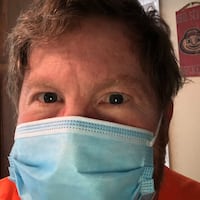Pollinators, which include bees, butterflies and other insects, are critical in carrying pollen from the male part of a flower to a female part of the same flower or another, in a different. Without pollination, a plant will not become fertilized and produce seeds, fruits and other plants.
Over the winter, Hall studied the best plants to put into pollinator gardens. On Martin Luther King Day this year, volunteers cleaned up the properties in preparation for the conversion.
Hall credited Brandon Saurber, the city’s director of neighborhoods, for the plan to transform empty lots into pollinator gardens. Because there were two empty lots next to where Hall already was gardening for the New Life Mission, “I got the bright idea, ‘Well, why don’t we see if he’ll give us the money, and we can go ahead and just put one in here’.”
Hamilton resident Jeff Gambrell, who has advocated locally on behalf of bees and other green issues, also played a major role in the park’s creation.
The park also features a metal butterfly sculpture created by artist Matt Faulkner of DMF Fabrications on Heaton Street.
Also planted nearby are squash, zucchini, sweet peppers, tomatoes, cucumbers and scallions.
“We planted 160 strawberries in 10 raised boxes, and that’s sort of the people-food aspect of the pollinator garden,” and it’s next to the vegetable garden.
“It’s there,” Hall said. “We’d love to have people come by, pull up a chair or sit on a bucket, and watch the garden grow. It’s for everybody, and pollinators. They’re beneficial insects.”
About the Author

